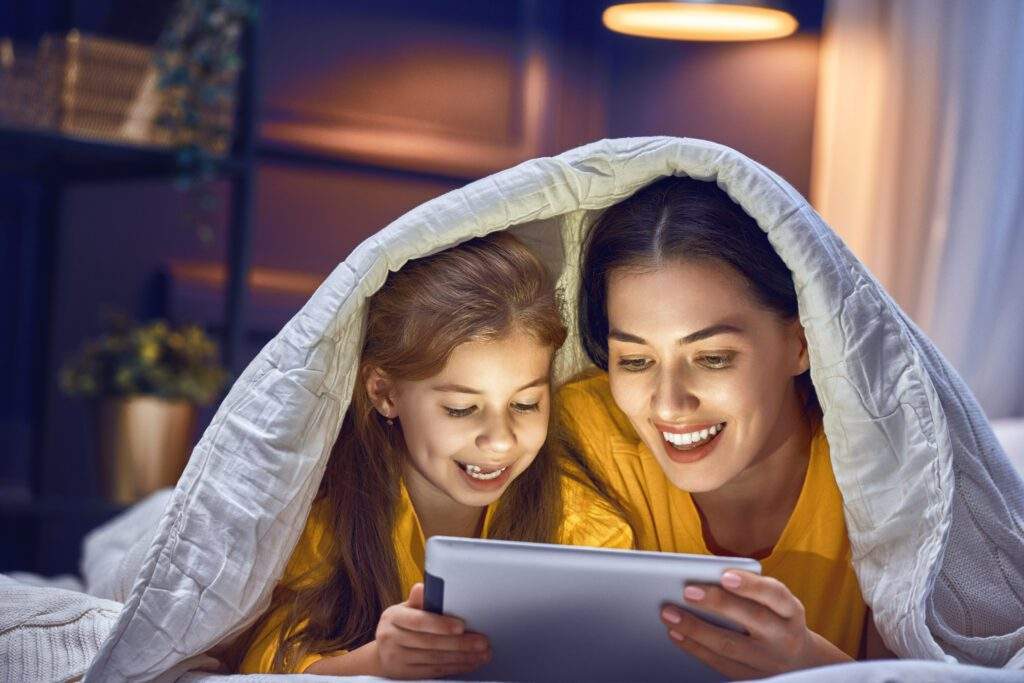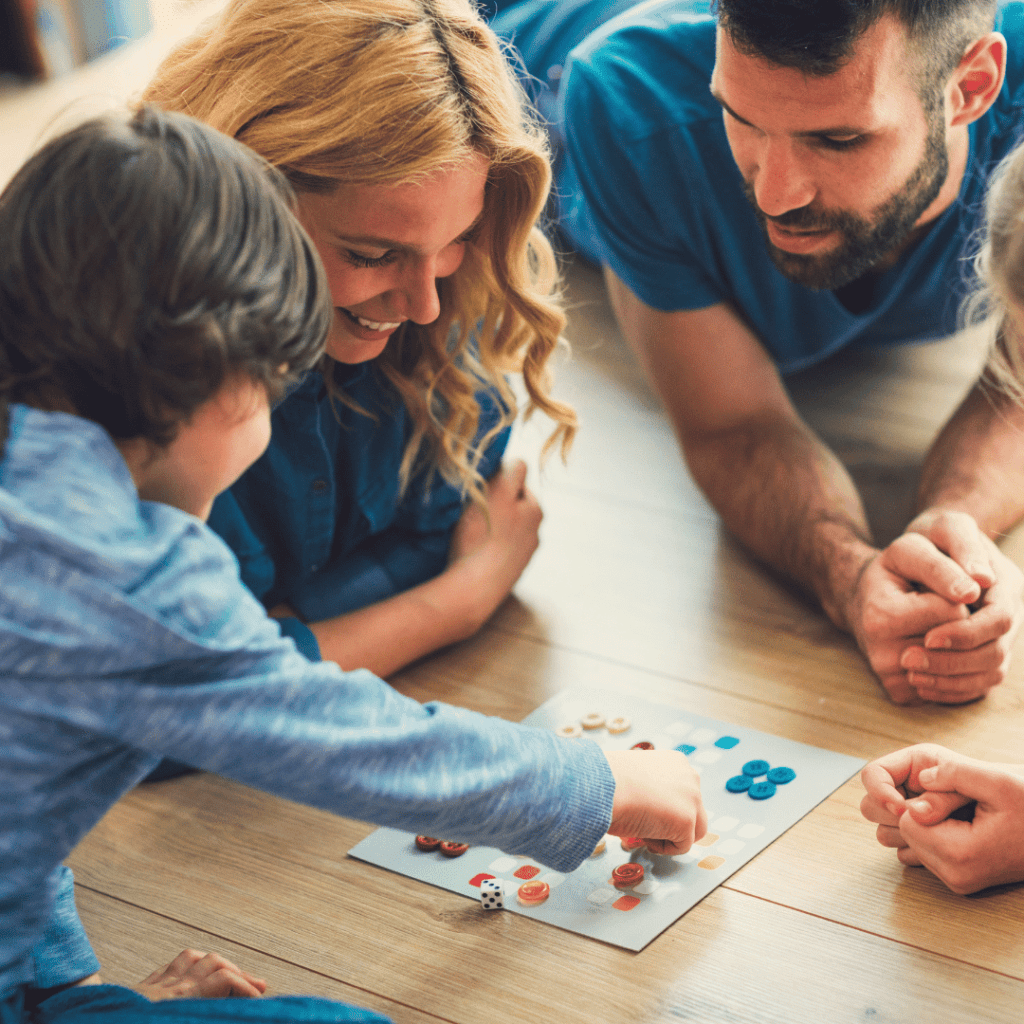Ready to sleep better tonight? Here are my Top 5 Tips for helping your little one sleep better!
How Blue Light Impacts Children’s Sleep

Blue light has become an essential part of our daily lives, whether we realize it or not. It comes from a lot of sources, such as smartphones, tablets, computers, and even energy-efficient LED bulbs. But what exactly is blue light? It is a color in the visible light spectrum that has a short wavelength and high energy. It is known to suppress the production of melatonin, the hormone that regulates our sleep cycles.
The impact of blue light on sleep cycles
Our sleep cycles are influenced by the presence or absence of light. Exposure to blue light, especially in the evening, can disrupt our natural sleep-wake cycle. When we are exposed to blue light at night, it tricks our brain into thinking that it is still daytime, making it harder for us to fall asleep. This can cause a problem for children, as their developing brains are more sensitive to these disruptions. Children are being exposed more and more to blue light from a young age, whether it’s from watching cartoons on tablets or playing video games on smartphones. Research has shown that blue light exposure in the evening can lead to delayed sleep onset in children, resulting in shorter sleep duration and poorer sleep quality. This can have a major impact on their overall well-being, affecting their mood, cognitive function, and even their academic performance.
Reducing blue light exposure for better sleep
It is essential to take proactive steps to reduce your children’s exposure to blue light. One effective strategy is to set up a digital curfew in the evening, where electronic devices are turned off at least one hour before bedtime. This allows their bodies to naturally wind down and prepare for sleep. Using blue light filters or apps on devices can help to minimize the amount of blue light emitted.
Reducing blue light exposure before bedtime is crucial for promoting healthy sleep habits. Here are some practical tips to minimize blue light exposure for children:

Set a digital curfew: Turn off electronic devices at least one hour before bedtime.
Use blue light filters: Apply blue light filters on devices or use specialized apps to reduce blue light emission.
Encourage analog activities: Engage in screen-free activities such as reading, drawing, or playing board games in the evening.
Dim the lights: Lower the overall brightness in the house as bedtime approaches to signal to the body that it’s time to wind down.
The benefits of using red, yellow, or orange light before bedtime
If you’re looking for an alternative to blue light before bedtime, consider using red, yellow, or orange light. These colors have longer wavelengths and lower energy, making them less likely to disrupt our sleep. Studies have shown that exposure to red, yellow, or orange light in the evening hours can help stimulate the production of melatonin and promote a sense of relaxation. This can make it easier for children to fall asleep and maintain a deep, restful sleep throughout the night. So, consider swapping out the bright, blue-toned nightlights in your child’s bedroom for softer, warm-toned alternatives. Not only will it create a cozy and calming atmosphere, but it will also support their natural sleep-wake cycles.
Creating a sleep-friendly environment for children
Creating a sleep-friendly environment and a consistent bedtime routine can significantly improve their sleep quality. Ensure that the bedroom is cool, quiet, and dark, as light can interfere with their sleep. Consider using blackout curtains or blinds to block out any external light sources that may disrupt their sleep. Incorporating the right lighting into this routine can further enhance its effectiveness. Here’s how you can create a bedtime routine with the perfect lighting:
Dim the lights: About 30 minutes before bedtime, start dimming the lights in your baby’s room. This signals to their brain that it’s time to wind down and prepare for sleep.
Use a red nightlight: During your baby’s bedtime routine, consider using a red nightlight in their room. This gentle, warm light will help create a calming atmosphere and promote the production of melatonin.
Read a bedtime story: As part of your bedtime routine, read a soothing bedtime story using a soft, warm light. This will not only help them relax but also create a positive association between reading and sleep.
By incorporating the right lighting into your baby’s bedtime routine, you can establish healthy sleep habits that will benefit them for years to come. Download a Day Schedule here to make sure your child is getting the right amount of sleep during the day and at nighttime.
It is important to prioritize our children’s sleep health. Understanding the impact of blue light on their sleep cycles and taking proactive steps to minimize their exposure can make a big difference in their overall well-being. By creating a sleep-friendly environment, establishing consistent bedtime routines, and incorporating alternatives to blue light, we can promote healthy sleep habits and ensure that our children get the restful sleep they need for optimal growth and development.
I am a Pediatric Sleep Consultant with over 10 years’ experience working with children. If your child is experiencing any issues related to sleep, schedule a call with me here so we can have a chat to see where the issue is and how we can solve it. I love working with parents and seeing the big impact in their lives when everyone in the house is getting the sleep they need.


